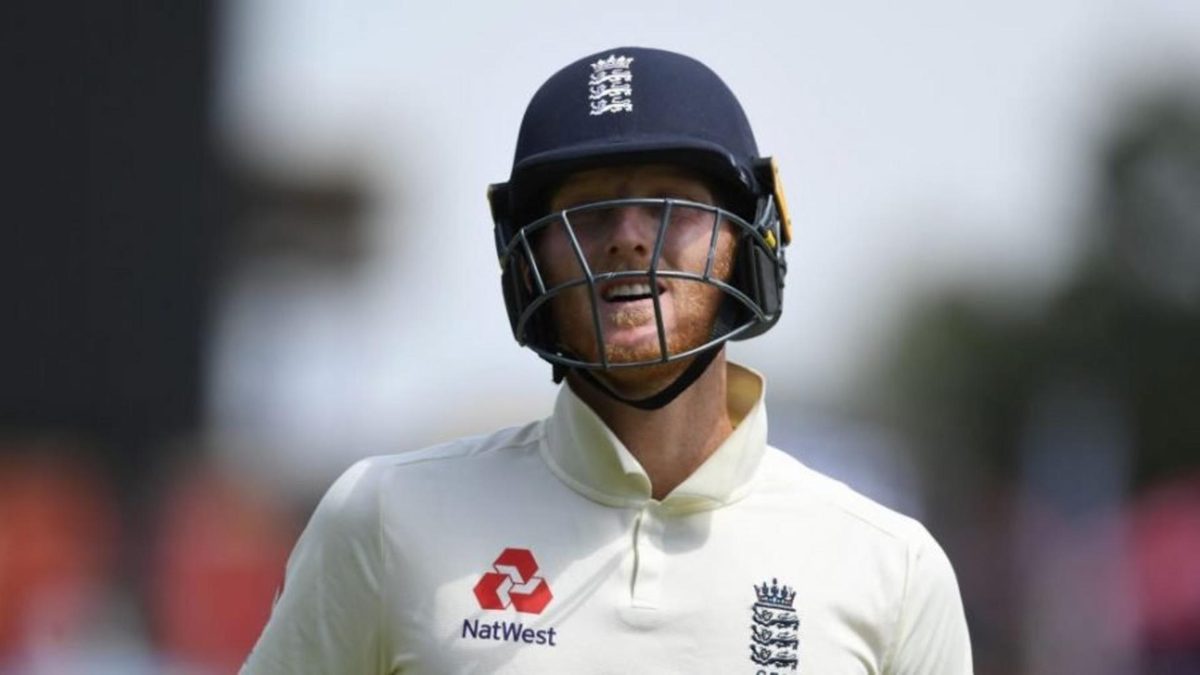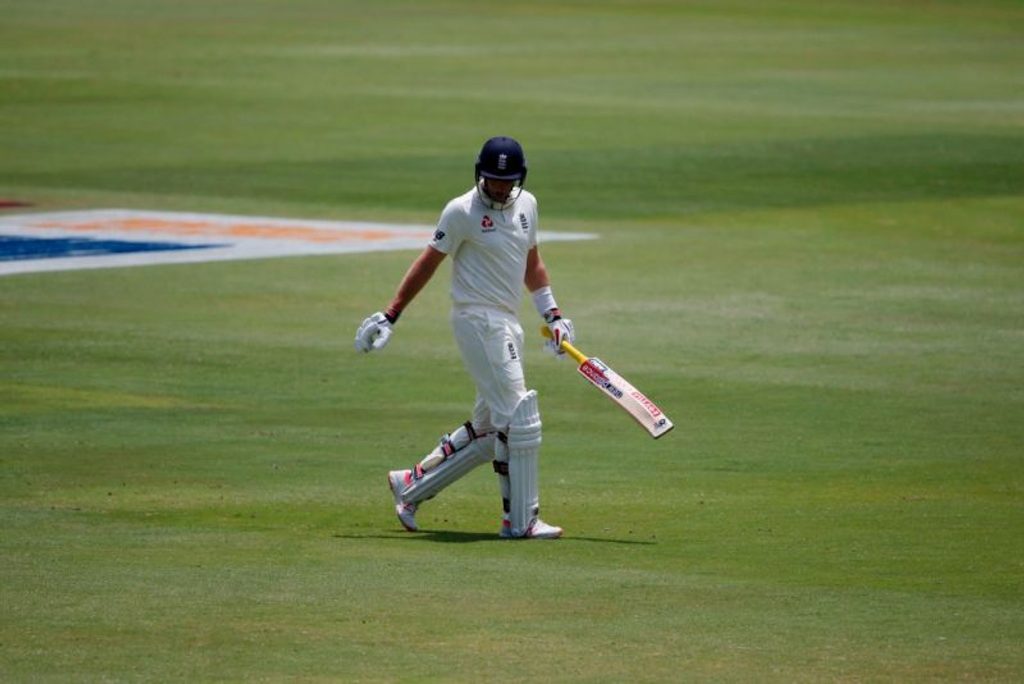
On a day when England suffered yet another collapse, from 142-3 to 181 all out, Yas Rana wonders why England’s two best batsmen were also their two most culpable.
We all know about England’s problems with the bat. The comedic frequency of their collapses, the never-ending struggle to find a viable long-term opening partnership, the merry-go-round at number three. There’s a depressing repetitiveness in their unpredictability.
But in Joe Root, Ben Stokes and Jonny Bairstow, England have a near identical middle order to the one last toured South Africa four years ago, with Jos Buttler – a man who had debuted 18 months previously – the only addition at the expense of James Taylor. And with England’s top three sharing just 26 Test caps between and coming up against an excellent South Africa new-ball attack at a ground where their record is formidable, it was perhaps to be expected that England would need a middle-order rescue act.
Rory Burns and Dom Sibley, although they only mustered 13 runs between them, will go to bed tonight knowing they were dismissed by two brutal deliveries from Vernon Philander and Kagiso Rabada respectively. Joe Denly, who batted patiently to withstand a difficult opening period before cashing in later in the morning, was the victim of a smart bit of bowling from debutant Dwaine Pretorious, who got two successive balls to swing in opposite directions to induce a faint inside edge.
— Wisden (@WisdenCricket) December 27, 2019
Bairstow’s struggles in Test cricket over the last two years – particularly against balls hitting the stumps – have been well documented. But Root and Stokes are indisputably England’s two best batsmen, the former arguably England’s most naturally talented post-war batsman and the latter the hero of English cricket’s year of all years.
Neither Stokes or Root were out-thought or out-played by South Africa today. Root was serene before edging behind off Philander, advancing down the wicket attempting to guide an unthreatening delivery down to third man. Stokes also looked good, the highlight of his 46-ball stay at the crease two consecutive sixes off the spin of Keshav Maharaj. But he too fell softly. Driving hard at a ball from Anrich Nortje that was neither terrible nor particularly threatening, it was a shot that didn’t exactly ooze responsibility, especially considering England had already lost Denly and Bairstow in the preceding three overs. England’s inexperienced top three were got out; England’s two most reliable batsmen got themselves out.
And another!
England now six wickets down. pic.twitter.com/i0OOybUoez
— Wisden (@WisdenCricket) December 27, 2019
It’s not the first time this winter that Root and Stokes have been to blame for their own downfalls. In fact, Root has been out trying to dab the ball towards third man three times already since the end of the summer. The only time he wasn’t out in that fashion, he scored a double-century. For Stokes, it was his first innings dismissal, advancing down the wicket to Tim Southee on 91, that prompted the collapse that ultimately cost them the Mount Maunganui Test. Even in the second innings, he played on trying to cut a wide delivery as England were theoretically batting for survival.
It was Stokes’ wild cut shot in the Edgbaston Ashes Test that sparked a collapse of 18-4 that proved pivotal in their eventual defeat. Well set on 50 alongside Burns, Stokes was in a position to bat Australia out of the Test. He played a similarly ill-judged shot with similar consequences off the bowling of Mitchell Marsh in the first innings at The Oval. Some balls are meant to be sent to the boundary, but more often than not it is poor shot selection rather than poor execution that is Stokes’ downfall.
It might seem perverse picking holes in the recent records of England’s best two batsmen and it’s considered high treason in some quarters to even contemplate criticising Ben Stokes in 2019 of all years. But in a team rich with frailties, England need their best two batsmen to make the absolute most of their ability.
On most days Stokes looks a million dollars with bat in hand. He is responsible for one of the all-time great Test innings and 2019 is very much his year. But he’s also 28 years old and has only averaged more than 40 in a three, four or five-match series on just three occasions. That’s not close to making the most of his considerable talent.
Stokes could perhaps benefit from a more clearly defined remit. Maybe we don’t get the back-to-back six-hitting thrills without the odd disappointment but England don’t need a swashbuckling, counter-attacking number six or seven. Above all else they need a greedy run-scorer whose sole measure of success is how many, not how. He is adaptable enough to be whatever England need him to be.
 Joe Root was particularly culpable for his dismissal
Joe Root was particularly culpable for his dismissal
Root is coming to the end of his most difficult year in Test cricket since 2013. In the Ashes, he was often undone by excellent bowling and at times the weight of the burden of captaincy can be seen in the droop of his shoulders. But he too has an uncanny habit of finding ways to get out even when he looks at his best. It’s telling that his highest Test score (his 254 against Pakistan in 2016) came at the peak of criticism of his conversion rate (those were the days) – he had scored just one Test hundred in the preceding 11 months – and his second highest score – the 226 in Hamilton – came after talk of the effects captaincy was having on his batting also reached its peak.
The batsman with the most Test runs in 2019 is Marnus Labuschagne. As impressive an operator as he is, his staggering recent success should act as motivation for Root and Stokes. If he is capable of that level of achievement, then Stokes and Root are too.
Conversation will naturally turn to those most vulnerable in the team, to Sibley’s suitability to opening in Test cricket, and to Bairstow’s current suitability to even be in a squad. But there’s little England can do about the shallow depth of the current talent pool. What they can do is focus on the controllables and eke out every possible run from their two standout batsmen. If they can manage that then Root and Stokes are capable of papering over the many cracks elsewhere in the team.








